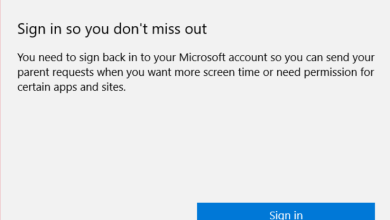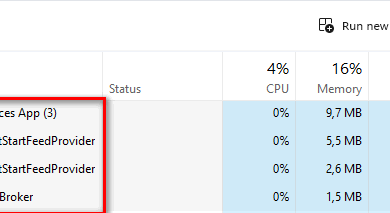How to Disable Access to Control Panel and Settings App in Windows 10?
Control Panel and Settings App are used for configuring different types of settings for the Windows operating system. These are default applications and can be accessed easily through different methods. However, an administrator of the system can completely disable the access to Settings App and Control Panel for standard users. There are also policy settings for disabling a specific setting in these, but it can also be completely disabled. In this article, we will be showing you methods through which you can disable access to Control Panel and Settings App.

Disabling Access to Settings App and Control Panel
There are two methods to disable the access to Settings app and Control Panel on a computer. One is by enabling the policy setting in the Local Group Policy Editor and the second one is by creating value in Registry Editor. Both of the methods will work similarly in disabling the access. We have included the Registry Method especially for the users that are using Windows Home Edition. If users have access to the Local Group Policy Editor, then it is better to use Group Policy Editor to be safe. This is because the Registry Editor is a bit complicated compared to the Group Policy Editor and configuring it wrong will have consequences.
Method 1: Disabling through the Local Group Policy Editor
All policy settings can be found in the Local Group Policy Editor. Settings in the Local Group Policy Editor are pretty easy to configure anytime. This policy setting will remove the control panel from File Explorer and the Start Screen. It will also remove the Settings app from the Settings charm, an Account picture, Search results, and the Start screen.
Users that are using Windows Home Edition should skip this method and move to method 2.
If you already got the Local Group Policy Editor on your computer, then follow the below steps to disable access to Control Panel and Settings app:
- Press the Windows + R keys together to open a Run dialog on your system. Then, type “gpedit.msc” and press the Enter key to open the Local Group Policy Editor.
Note: If UAC (User Account Control) prompt appears, then click on the Yes button.
Opening Local Group Policy Editor - In the User Configuration of the Local Group Policy Editor, navigate to the following setting:
User Configuration\ Administrative Templates\ Control Panel
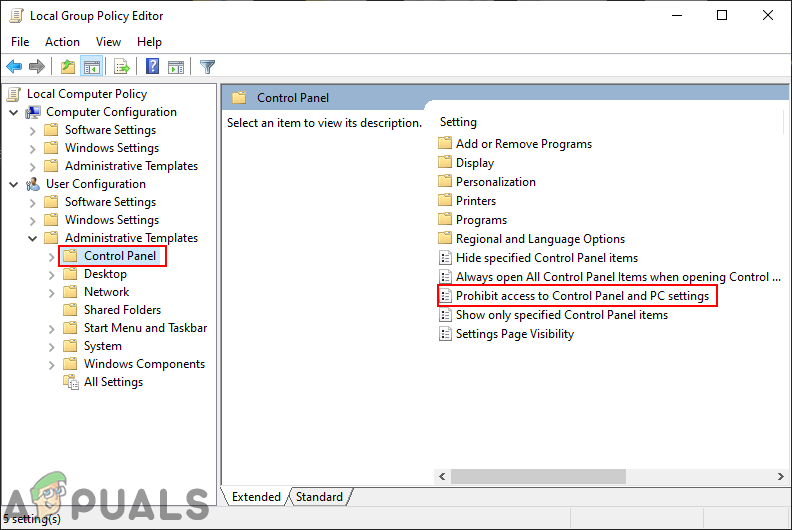
Navigating to the policy setting - Double-click on the “Prohibit access to Control Panel and PC settings” policy in the list. It will open a new window, change the toggle option from Not Configured to Enabled.
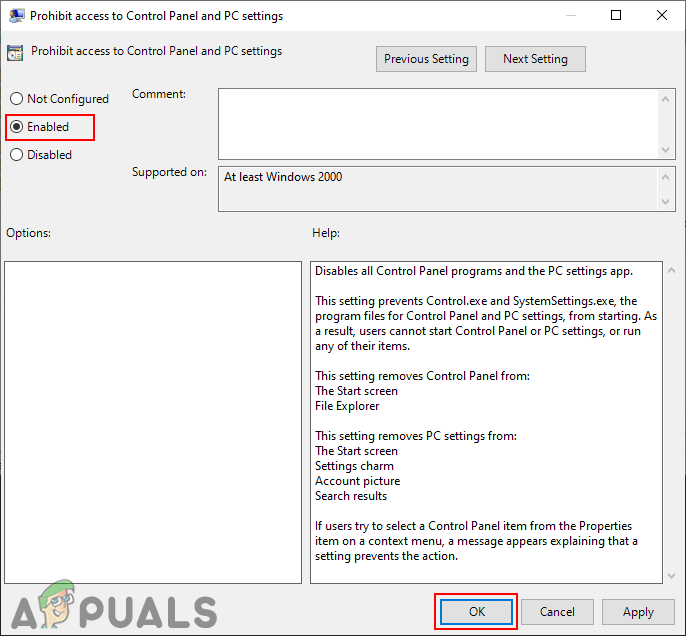
Disabling access to Control Panel and Settings App - After changing the toggle option, click on Apply then Ok buttons to apply changes. This will disable the Control Panel and Windows Settings app.
Method 2: Disabling through the Registry Editor
The Registry Editor stores many important settings of our system. Most of the settings will already have registry values. However, sometimes the user is required to create the missing key or values manually. The value will work according to the value data that is set for it. This is mostly for the users that don’t have access to the Local Group Policy Editor on their system. Users that used the first method will automatically have values in the Registry Editor.
- Hold the Windows key and press R to open the Run dialog. Then type “regedit” in the box and press Enter to open the Registry Editor. Choose the Yes option for UAC (User Account Control) prompt.
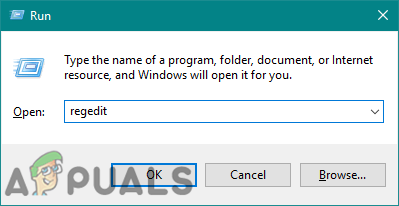
Opening the Registry Editor - Navigate to the following key in the Registry Editor window:
HKEY_CURRENT_USER\Software\Microsoft\Windows\CurrentVersion\Policies\Explorer
- Right-click on the right pane and choose New > DWORD (32-bit) Value. Name the new value as “NoControlPanel“.
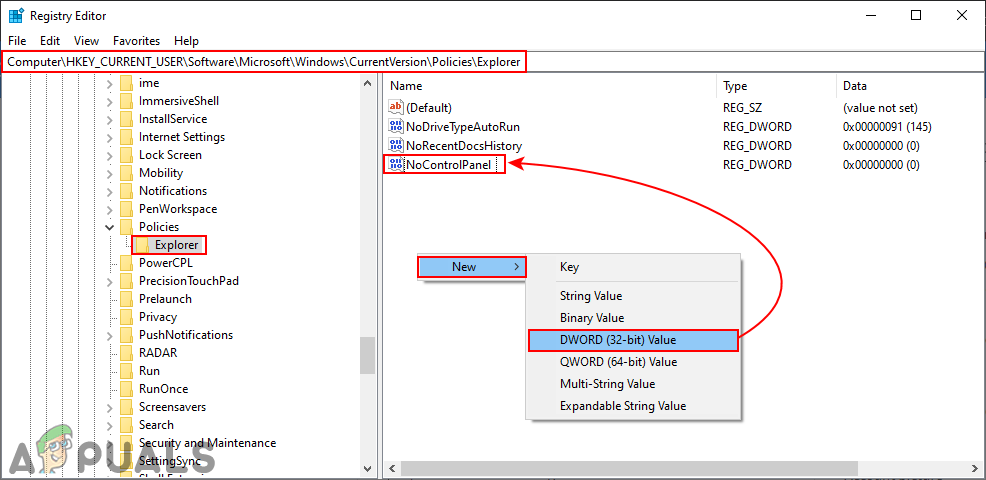
Creating a new value - Double-click on the NoControlPanel value and change the value data to 1.
Note: Value data 1 will enable the value and value data 0 will disable the value. You can also simply delete the value to disable the setting.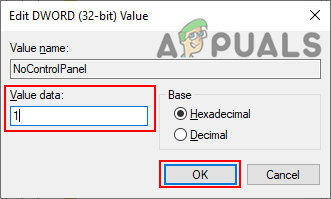
Enabling the value - Once all steps are done, make sure to restart your computer to apply the changes.



